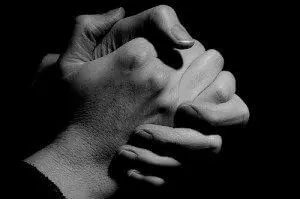6 months after my first miscarriage, I had another. I was dumbfounded. I had three previous problem-free healthy pregnancies that went beyond full term, and I was only 28. If you’ve suffered multiple miscarriages, often referred to as “recurrent miscarriage” when the loss number reaches three, I know whether or not your next pregnancy will end in miscarriage is at the forefront of your mind. Part of you wants to try again so very badly, and another part is terrified that it will be a fruitless endeavor wrought with pain-again. The question is: what are your odds?
What are the chances of multiple miscarriages?
Think of getting pregnant like the roll of a dice. The chance you’ll roll a 1 is 1 in 6 on that first roll, but if you roll again probability starts to come into play, your chances just got higher. This is true when it comes to miscarriage. On that first roll, around 10 and 25 percent of women miscarry depending on age. On that second roll, only about 5 percent of women miscarry a second consecutive time. Of the unlucky 5 percent of women that have to roll a third time, only 1 percent miscarry. Once you’ve had three consecutive miscarriages, it’s safe to assume someone’s cheating, and you should seek medical testing to determine if there is an underlying cause. Unfortunately, most medical professionals will not actually do any testing before this point.
What are the chances of a successful pregnancy after multiple miscarriages?
Now, this is where things get confusing. While only 5 percent of women suffer two consecutive miscarriages, the chances of a successful pregnancy after one miscarriage is 90 percent, and while only 1 percent of women suffer three consecutive miscarriages, the chance of a successful pregnancy after two losses is 75 percent. The chance of a successful pregnancy after three losses is even lower at 65 percent, and lower still after 4 losses at 55 percent. How does that work? One statistic is looking at the overall probability weighed against all pregnancy data. Of all pregnant women only 1 percent of those miscarried three times in a row. The other statistic looks at rates of miscarriage within categories. A woman in the category of “two consecutive losses” has a 25 percent chance of miscarrying again (75 percent chance of a successful pregnancy).
So, does a miscarriage increase your risk of miscarriage?
Not exactly. The reason that your chances of a successful pregnancy decrease as you have more miscarriages is that the chance that you’re getting a fair roll decreases. For example, after one miscarriage it’s likely that it was just bad luck. Something went wrong on a genetic level and nothing could have been done to prevent it. You just rolled a 1. However, after three losses, chances are far higher there is an underlying cause such as poor egg quality, unusual uterine shape, or other health issues. You had a weighted dice and just didn’t know it until you kept rolling 1’s. Bad analogy aside, the cut and dry?
Your chances of consecutive miscarriage are low, and get lower the more losses you suffer, unless you have an underlying health issue, which can lead to the appearance of higher rates of loss in women who have had more losses. Sadly, you won’t know if you have an underlying health issue until three losses, and even then many women never find the cause. I had two losses, then a beautiful baby girl this month.



